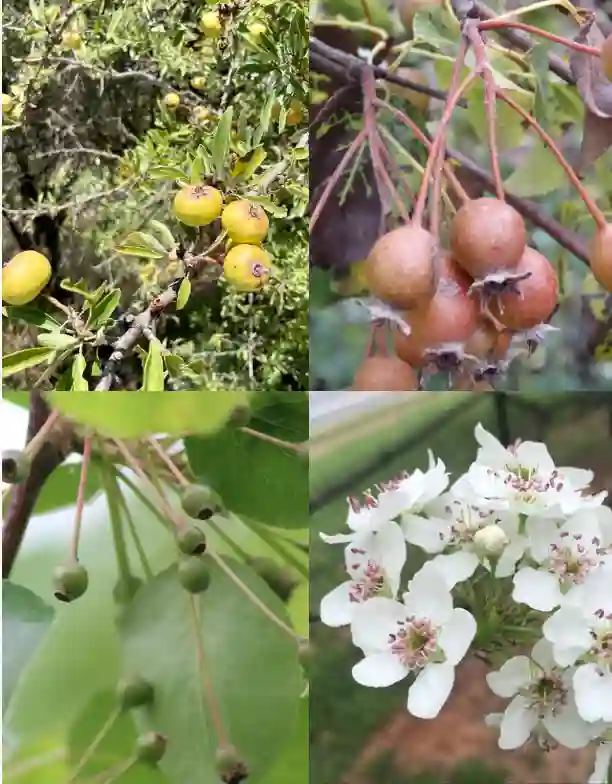Nepenthes Naga: A Guide for the Discerning Carnivore Plant Enthusiast
Hi, I’m Ferb Vu, and carnivorous plants are my passion. Today, we’re diving deep into the fascinating world of Nepenthes Naga, a captivating pitcher plant recently discovered in the Barisan Mountains of Sumatra.
This exotic beauty boasts unique features and a temperament that appeals to both seasoned collectors and curious beginners. So, whether you’re a seasoned Nepenthes aficionado or just starting your pitcher plant journey, this guide will equip you with the knowledge to cultivate a thriving Nepenthes Naga.
Plant Family: Nepenthaceae – 207 Species in Genus Nepenthes
What is Nepenthes Naga?
Nepenthes Naga is a climbing vine, gracefully reaching heights of around 5 meters. Its slender stem, about 1 centimeter in diameter, supports elongated leaves with a distinctive peltate (shield-shaped) base. But the true stars of the show are the mesmerizing pitchers.
These specialized traps, formed from modified leaf tips, are where the Nepenthes Naga gets its carnivorous reputation. Lured by vibrant colors and enticing scents, unsuspecting insects find themselves trapped in the pitcher’s slippery fluid, ultimately becoming a nutritious meal for the plant.
What Makes Nepenthes Naga Special?
Several characteristics set Nepenthes Naga apart from its carnivorous kin. Here are a few that truly make it stand out:
- The Dragon’s Tongue: The most striking feature is the forked, sub-apical appendage on the underside of the lid. This unique appendage resembles a dragon’s tongue, hence the apt name “Naga,” which translates to “dragon” in Bahasa Indonesia.
- Undulating Lid Margin: The margin, or edge, of the pitcher’s lid is beautifully wavy, adding another layer of visual interest to the already captivating trap.
- Coloration: Young pitchers often display a vibrant plum color, maturing to a captivating deep purple or even black as they age. This dramatic color shift adds a dynamic element to the plant’s appearance.
While Nepenthes Naga shares some similarities with its close relative, Nepenthes bongso, there are key distinctions. Nepenthes Naga has a more elongated and slender pitcher shape, and its forked appendage is a definitive characteristic it lacks in Nepenthes bongso.
How to care for Nepenthes Naga?
So, you’ve been captivated by the allure of Nepenthes Naga and want to bring one home? Here’s what you need to know to ensure your prized possession thrives:
- Light: Nepenthes Naga prefers bright, indirect light. Think dappled sunlight filtering through a canopy of trees in its natural habitat. Avoid harsh, direct sun exposure, which can scorch the leaves and pitchers.
- Humidity: As a tropical native, Nepenthes Naga craves high humidity levels, ideally between 70% and 80%. You can achieve this by using a humidifier, placing the plant on a pebble tray filled with water, or grouping it with other humidity-loving plants.
- Watering: Use only distilled water, rainwater, or reverse osmosis water to avoid mineral build-up that can harm the plant. Water deeply when the potting medium dries slightly to the touch.
- Temperature: Nepenthes Naga flourishes in warm temperatures, ideally between 68°F and 86°F (20°C and 30°C). Avoid exposing it to temperatures below 55°F (13°C) for extended periods.
- Feeding: While Nepentes Naga can survive without being fed insects, providing occasional treats can supplement its nutrient intake. Bloodworms and small flies are excellent options.
Pro Tip: Avoid overfeeding, as this can lead to the decomposition of the prey inside the pitcher, harming the plant.
Patience is Key
Nepenthes Naga is a slow grower, so don’t expect rapid results. However, with consistent care and attention to its specific needs, you’ll be rewarded with a captivating and unique carnivorous plant that will be a conversation starter in your home for years to come.
The Allure of Nepenthes Naga
The captivating beauty and fascinating ecological adaptations of Nepenthes Naga make it a prized possession for carnivorous plant enthusiasts. With its unique “dragon’s tongue” appendage, mesmerizing color variations, and relatively manageable care requirements, this captivating pitcher plant is sure to become a cherished addition to your collection.
So, if you’re looking for a plant that’s both visually stunning and ecologically intriguing, look no further than the Nepenthes Naga. With a little patience and dedication, you can cultivate this remarkable carnivorous wonder in your own home.
If i die, water my plants!



